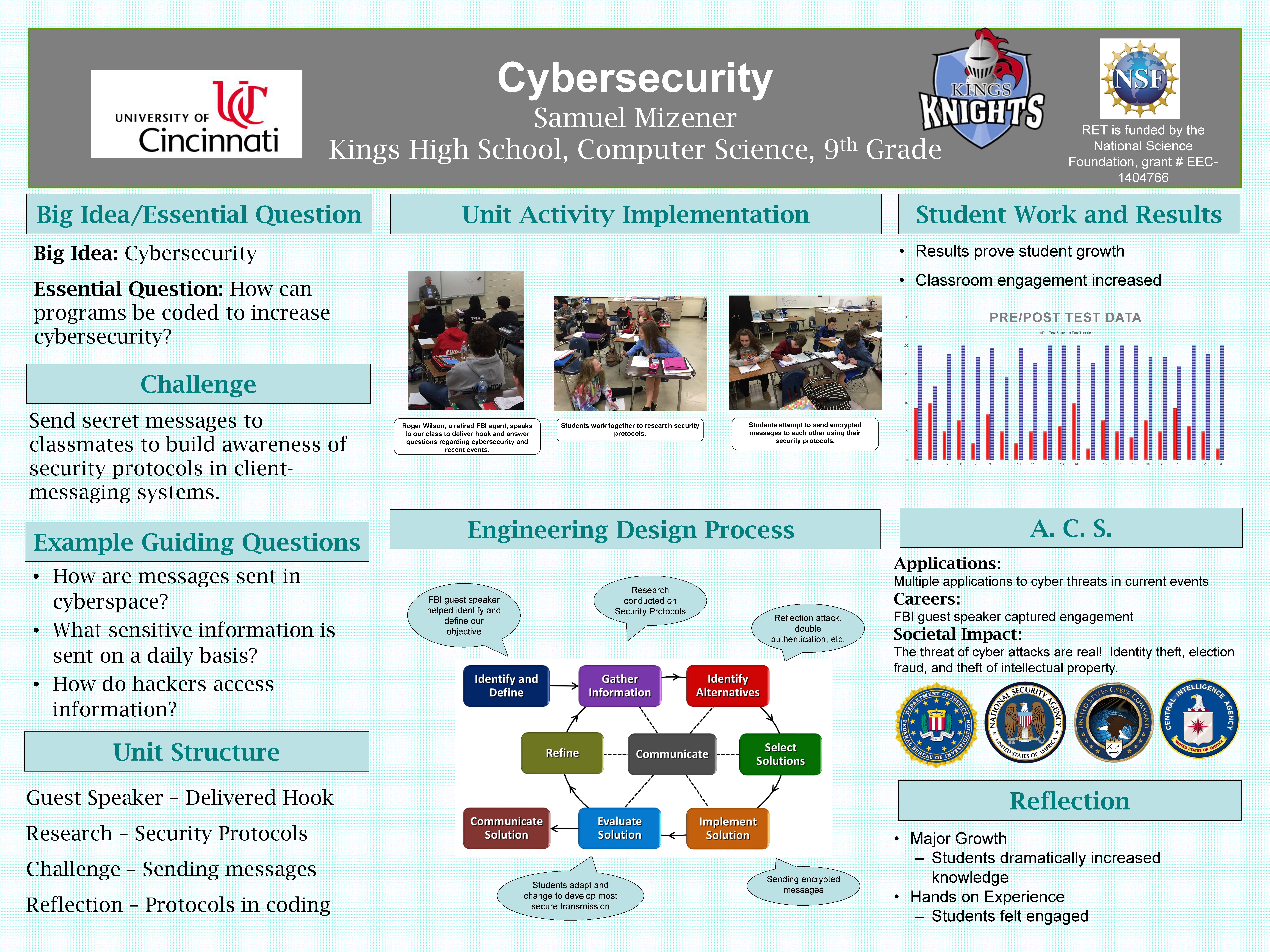Research Experience for Teachers (2016-2017)
Cyberspace Attack & Defense
 |
||||||
|
||||||
|
Pre/Post Test: Pre-Test Post-Test |
||||||
Keywords:
|
|
The Big Idea (including global relevance) CYBERSECURITY - FBI investigates attackers who seek to take down economic, financial, and government assets. |
|
Essential Questions
|
|
The Hook The unit will begin by listening to a Special Agent from the FBI speak about the FBI’s role in cybersecurity. They will go into detail the importance of cybersecurity as well as the consequences of writing bad codes. |
|
The Challenge Develop a knowledge base of security protocols and their vulnerabilities. The focus is on the process of critiquing programs until they are free of vulnerabilities. |
|
Guiding Questions
|
ACS (Real world applications; career connections; societal impact)
World organizations, public and private, are continually under threat of cyber-attacks. The amount of money and effort put into securing communications via cyberspace is constantly increasing. The value in teaching future programmers the importance of cybersecurity is monumental.
I would be surprised to find anyone in our school or community that was not directly affected by computer programs. This includes text messages, online banking, logging onto the internet, driving a car, etc. Students will research the consequences of vulnerabilities as well as current events to which vulnerabilities have led to cyber-attacks (Activity #3).
My plan throughout the entire year is to bring in guest speakers every Friday that are involved directly or indirectly with computer science. As it relates to this unit, my first day will include a retired FBI agent, Roger Wilson, who co-founded the Cyberspace task force "Red-eye" at the FBI.
Misconceptions
- How messages are sent via cyberspace
- How vulnerabilities are found when a command is not accounted for
- Protecting programs so they ONLY do what you want and nothing more
- How messages are encrypted
Unit Lessons and Activities
- Lesson 1: Vulnerabilities in Cyberspace (5 Days)
Lesson 1 will start by hearing from a guest speaker about the importance of sending messages securely and then discussing our essential questions.- Activity 1: Introducing the Big Idea and listening to our guest speaker. Class discussion will be held the next day where students identify essential questions suggest the challenge. – 2 Days
- Activity 2: Students research the consequences of vulnerabilities in computer code as well as current events to which vulnerabilities have led to cyber-attacks – 3 Days
- Lesson 2: Attack & Defense (7 Days)
Lesson 2 works on Lesson 1 by building on how two clients can message each other and how shows the danger and consequences of a third party intercepting those messages. Depending on the information being communicated, this could have devastating effects.- Activity 3: Develop a process to securely send an encrypted message. – 2 Days
- Activity 4: Introduce the Challenge: “Mad Lib” Project activity – Revisit previously written code and identify places of vulnerability and places where security protocols are needed. – 3 Days
- Evidence of CBL: Lesson 2, Activity 4
- Evidence of EDP: Lesson 2, Activity 4
Additional Resources
